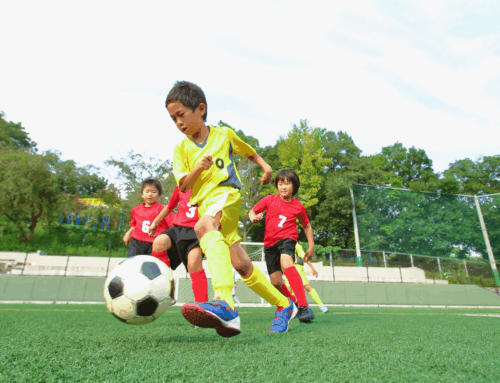Get our exclusive report. Download the iSport360 Club Switching Report Here – For Club Admins, Rec Leaders and Coaches.
Power Up: The Best Daily Snacks for Athletes
For athletes, what happens between meals can be just as important as what’s on the dinner plate. Learn more about snacks for athletes. Strategic snacking isn’t just about satisfying hunger—it’s about maintaining energy levels, supporting recovery, and optimizing performance. But with endless options filling grocery store shelves (many with flashy packaging promising peak performance), how do you choose snacks that actually deliver?
As someone who’s worked with athletes across various sports, I’ve seen how the right snacking strategy can make a noticeable difference in energy levels, recovery times, and overall performance. Here’s my guide to smart, effective snacking for athletes at any level.
Timing Matters: When to Snack – Snacks for Athetes
Before diving into specific foods, let’s talk timing. For optimal athletic performance, consider these key snacking windows:
Morning snack (mid-morning): Bridges the gap between breakfast and lunch, maintaining stable blood sugar and preventing the energy crash that can derail a midday workout.
Pre-workout snack (1-2 hours before): Provides accessible energy without causing digestive discomfort during activity.
Post-workout snack (within 30 minutes): Takes advantage of the recovery window when muscles are primed to absorb nutrients.
Afternoon snack: Prevents late-day energy dips and helps control appetite before dinner.
Evening snack (if needed): Supports overnight recovery, particularly for athletes in heavy training phases.
Now, let’s explore what to eat during these windows.
The Building Blocks of Perfect Athletic Snacks
The best athletic snacks generally combine:
- Quality carbohydrates for readily available energy
- Lean protein for muscle repair and satiety
- Healthy fats (in moderation) for sustained energy
- Micronutrients from fruits and vegetables to support overall health
With these components in mind, here are my top recommendations for daily athletic snacking:
Pre-Workout Champions
- Banana with 1-2 tablespoons of peanut butter Simple, portable, and providing a perfect blend of quick-digesting carbs with a small amount of fat and protein to sustain energy.
- Greek yogurt with berries and a drizzle of honey Offers protein for muscle support while the berries provide antioxidants and the honey adds quick-release carbohydrates.
- Apple slices with string cheese The apple provides carbohydrates and fiber while the cheese adds protein and calcium—all in a convenient, portable package.
- Small smoothie (milk/yogurt, banana, berries) Liquid nutrition can be easier on the stomach before workouts while still providing necessary energy.
- Half a turkey sandwich on whole grain bread Provides a balanced combination of carbs and protein without excessive volume.
Post-Workout Recovery Boosters
- Chocolate milk Research consistently shows this simple beverage offers an excellent carb-to-protein ratio for recovery, plus necessary fluids.
- Greek yogurt with granola and fruit Delivers protein for muscle repair along with carbohydrates to replenish glycogen stores.
- Protein smoothie with banana and spinach The protein supports muscle recovery while the fruit and veggies provide carbs and micronutrients.
- Rice cakes topped with tuna or chicken Quick-digesting carbs combined with lean protein—perfect after intense sessions.
- Hard-boiled eggs with fruit Provides protein and essential vitamins while the fruit offers carbohydrates and antioxidants.
All-Day Energy Sustaining Snacks
- Trail mix with nuts, dried fruit, and dark chocolate Offers healthy fats, protein, fiber, and a touch of sweetness. Portion control is key—one handful is typically sufficient.
- Veggie sticks with hummus Provides fiber, hydration, and micronutrients along with plant-based protein and healthy fats.
- Cottage cheese with pineapple This classic combination offers slow-digesting protein with vitamin-rich fruit.
- Overnight oats with protein powder and berries Works any time of day, combining fiber-rich carbs with protein and antioxidants.
- Whole grain crackers with avocado Delivers quality carbohydrates with heart-healthy fats to sustain energy levels.
Smart Snacking Strategies for Athletes
Beyond the specific foods, consider these principles for maximizing your snacking strategy:
Hydrate alongside snacks: Many athletes overlook how snack times provide perfect opportunities to boost fluid intake. Consider having a full glass of water with each snack.
Prepare in advance: The busier your schedule, the more important preparation becomes. Spend 30 minutes each weekend prepping portable snacks for the week.
Consider your training phase: During heavy training blocks, more energy-dense snacks may be appropriate. During lighter phases or off-season, adjust accordingly.
Listen to your body: Hunger is a valid signal. If you’re consistently hungry despite regular meals and snacks, you may need to increase overall intake rather than ignoring hunger signals.
Choose whole foods most often: While commercial protein bars have their place, whole food snacks typically provide better micronutrient profiles and more sustained energy.
The Bottom Line
Strategic snacking can provide the edge athletes need, whether you’re a weekend warrior or competitive performer. By timing your snacks appropriately and choosing combinations that provide balanced nutrition, you’ll maintain energy levels, support recovery, and perform at your best.
Remember that individual needs vary based on your sport, body size, training intensity, and personal preferences. The best snacking strategy is one you’ll actually follow consistently, so choose options you enjoy that support your athletic goals.
iSport360 is the only app that does it all for youth sports. For more information on what we do, click here.
About the author:
Amy Masters is a sports mom, coach, and club administrator. She has been coaching youth sports for more than 10 years. She started Jr Lions Field Hockey, the youth recreation program for the Hunterdon County community growing it from 40 players in year 1 to 150 players by year 3. A few years later, she saw the love and competitiveness grow then started Omega Field Hockey Club serving NJ and PA players. Before coaching, she was a collegiate field hockey player for Lock Haven University. In her spare time (lol), she is head of marketing for iSport360 and the co-editor of the Youth Sports Survival Guide. The Youth Sports Survival Guide is the largest youth sports newsletter in the world.
Learn more or request a demo of our youth sports software that is helping teams improve communication, organization and player development.
April 26, 2025





